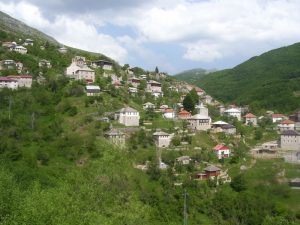 Enclosed in the middle of the Balkans, the former Yugoslavian province is a destination still sheltered from mass tourism. Yet, the country is home to an important cultural heritage and natural areas still wild. Small tour.
Enclosed in the middle of the Balkans, the former Yugoslavian province is a destination still sheltered from mass tourism. Yet, the country is home to an important cultural heritage and natural areas still wild. Small tour.
Ohrid
Built on the shores of the eponymous lake near the border with Albania, Ohrid is the country’s tourist capital. Founded in the 3rd century BC, the city has preserved traces of its ancient past, including a Roman theater still very well preserved. In the Middle Ages, the arrival of disciples of St. Cyril made the city a hotbed of Orthodox culture and religion, leading to the construction of numerous monasteries and churches, still in use today. The beaches on the lake and surrounding hills, ideal for long walks enjoying the view, have made it a popular seaside resort in Eastern Europe.
Skopje
Economic and administrative capital, it is by far the largest city in the country with nearly 700,000 inhabitants, or one third of the total population. Destroyed at 80% because of the earthquake of 1963, the city benefited from the international emotion aroused by this tragedy to rebuild quickly with the help of great modern architects, like the Japanese Kenzo Tange. In the 2000s, a vast urban development plan, Skopje 2014, enabled the construction of new museums and the reconstruction of many emblematic monuments, such as the Macedonian Gate, a triumphal arch commemorating the achievements of history Macedonian.
Pelister National Park
Located in southwestern Macedonia, the park is home to a large part of the region’s fauna and flora, including Macedonia pine, an endemic species. Built on a mountainside, the site offers a wide panorama of the Pelagonian plain where the city of Bitola, known for its Muslim architectural heritage, is located. Extending over 120 square kilometers, it is a sanctuary for many animals such as the brown bear or the lynx boreal, national symbol.
Stobi
Ancient city, it had its hour of glory during the Roman period occupying a strategic position for the trade and the defense of the Empire. Started in 1924, archaeological excavations have brought to light many buildings dating back to antiquity, such as a theater, baths or villas. After the conversion of Romans to Christianity, Stobi became one of the most important bishoprics in the region, as evidenced by the many bas-reliefs found in the basilica. Hardly hit by the Goths invasions, the city was definitively abandoned because of an earthquake that occurred in the 6th century.
St. Joachim Monastery of Osogovo
Orthodox monastery located at the extreme northeast near the Bulgarian border, it was founded in the twelfth century in the eponymous mountain range at 825 meters above sea level. Briefly transformed into a mosque at the time of the Ottoman invasions, it was named according to one of the four great Bulgarian hermits, St. Joachim, who evangelized the region in the eleventh century. The site consists of two churches, the largest has twelve domes, each dedicated to an apostle. Inside, beautiful medieval frescoes cover the stone walls.
